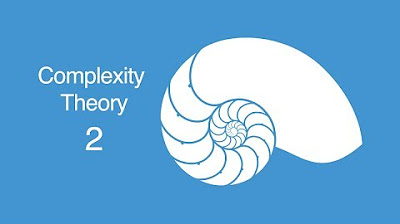Tools of Science: Modeling
Summary
TLDRThis script delves into the world of scientific models, which are mathematical representations of real-world phenomena. It explains how these models are used to simulate complex systems like climate or ecosystems, allowing scientists to test scenarios and make predictions. The script highlights the importance of models in building intuition, filling gaps in knowledge, and peering into the future or inaccessible places. It also emphasizes the role of mathematics in visualizing phenomena, enabling collaboration and discovery, and the continuous refinement of models with new evidence.
Takeaways
- 🧮 Models in science are mathematical representations of real-world phenomena, used to understand and predict complex systems.
- 🎮 Scientists use models like playing a video game to simulate and test various scenarios in a virtual world that mimics reality.
- 🔍 Models are crucial for building intuition, filling in gaps in observations, and peering into the future or inaccessible places.
- 🌐 Models require specific information about the system being studied, such as environmental conditions and interactions within the system.
- 🔄 Modeling allows for the testing of multiple parameters simultaneously in a simulated environment, offering insights into system dynamics.
- 🔗 Models help establish connections between sets of data by incorporating physical laws and principles, enhancing predictive accuracy.
- 🔮 They enable scientists to predict and test hypotheses in scenarios that are impossible or impractical to conduct in the real world.
- ⏱️ Unlike real-world experiments, models are not limited by time and space, allowing for the study of phenomena over extended periods or vast areas.
- 🔄 Models are dynamic and can be updated with new evidence, continually refining their accuracy and usefulness.
- 🌟 The power of models lies in their foundation on real-world data, empirical observations, and the ability to generate testable hypotheses and predictions.
Q & A
What is the primary difference between a physical model and a mathematical model used by scientists?
-A physical model is a tangible representation of something in the real world, often made of materials like plastic, while a mathematical model is an abstract representation using complex mathematics to simulate real-world processes or systems.
How do mathematical models help in understanding complex systems?
-Mathematical models allow scientists to approximate key aspects of the real world, enabling them to test various scenarios and understand how different factors interact within a system.
What are the three main uses of models as described in the script?
-Models are used for building intuition, filling in processes where direct observation is not possible, and peering into times or places that are inaccessible.
How do mathematical models assist in making predictions about the future or unobserved phenomena?
-Models use principles of physics and known data to predict outcomes in scenarios where direct observation or experimentation is not feasible, such as predicting the spread of a virus in the ocean.
What kind of information is necessary to create a mathematical model?
-To create a mathematical model, one needs information about the conditions surrounding the model, such as environmental factors, the presence of other interacting systems, and the relevant physical laws that govern the behavior of the system being modeled.
Why are models particularly useful in scientific experiments that would be impossible or impractical to conduct in the real world?
-Models are useful because they can simulate conditions and scenarios that are time-consuming, spatially extensive, or logistically challenging to replicate in the real world, such as observing the long-term effects of climate change or the behavior of microscopic organisms.
How do mathematical models help in making connections between sets of data?
-Models help in making connections between data sets by incorporating physical laws and principles, which allows for more accurate predictions and insights into how data points relate to each other within a given context.
What is the role of mathematics in refining and improving scientific models?
-Mathematics plays a crucial role in refining scientific models by providing the tools to visualize phenomena, test hypotheses, and make predictions that can be validated through empirical observations.
How can mathematical models be used to test hypotheses that are difficult to test in the real world?
-Mathematical models can be used to test hypotheses by simulating experimental conditions and outcomes that are too dangerous, expensive, or time-consuming to perform in the real world.
What is the importance of basing mathematical models on real-world data and empirical observations?
-Basing mathematical models on real-world data and empirical observations is important because it ensures that the models are grounded in reality, which makes their predictions and insights more reliable and applicable to solving real-world problems.
Outlines

This section is available to paid users only. Please upgrade to access this part.
Upgrade NowMindmap

This section is available to paid users only. Please upgrade to access this part.
Upgrade NowKeywords

This section is available to paid users only. Please upgrade to access this part.
Upgrade NowHighlights

This section is available to paid users only. Please upgrade to access this part.
Upgrade NowTranscripts

This section is available to paid users only. Please upgrade to access this part.
Upgrade NowBrowse More Related Video

SCIENTIFIC MODELLING | SCIENCE 7 MATATAG CURRICULUM | QUARTER 1 WEEK 1

Computing and Physics: How to Simulate Real Life with Math

Lecture 1: Basics of Mathematical Modeling

SCIENTIFIC MODELS | SCIENCE 7 MATATAG CURRICULUM | QUARTER 1 WEEK 1

UP TALKS | Hairy Balls and Donuts: The Fascinating World of Geometry | Dr. Jose Maria Balmaceda

Complexity Theory Overview
5.0 / 5 (0 votes)